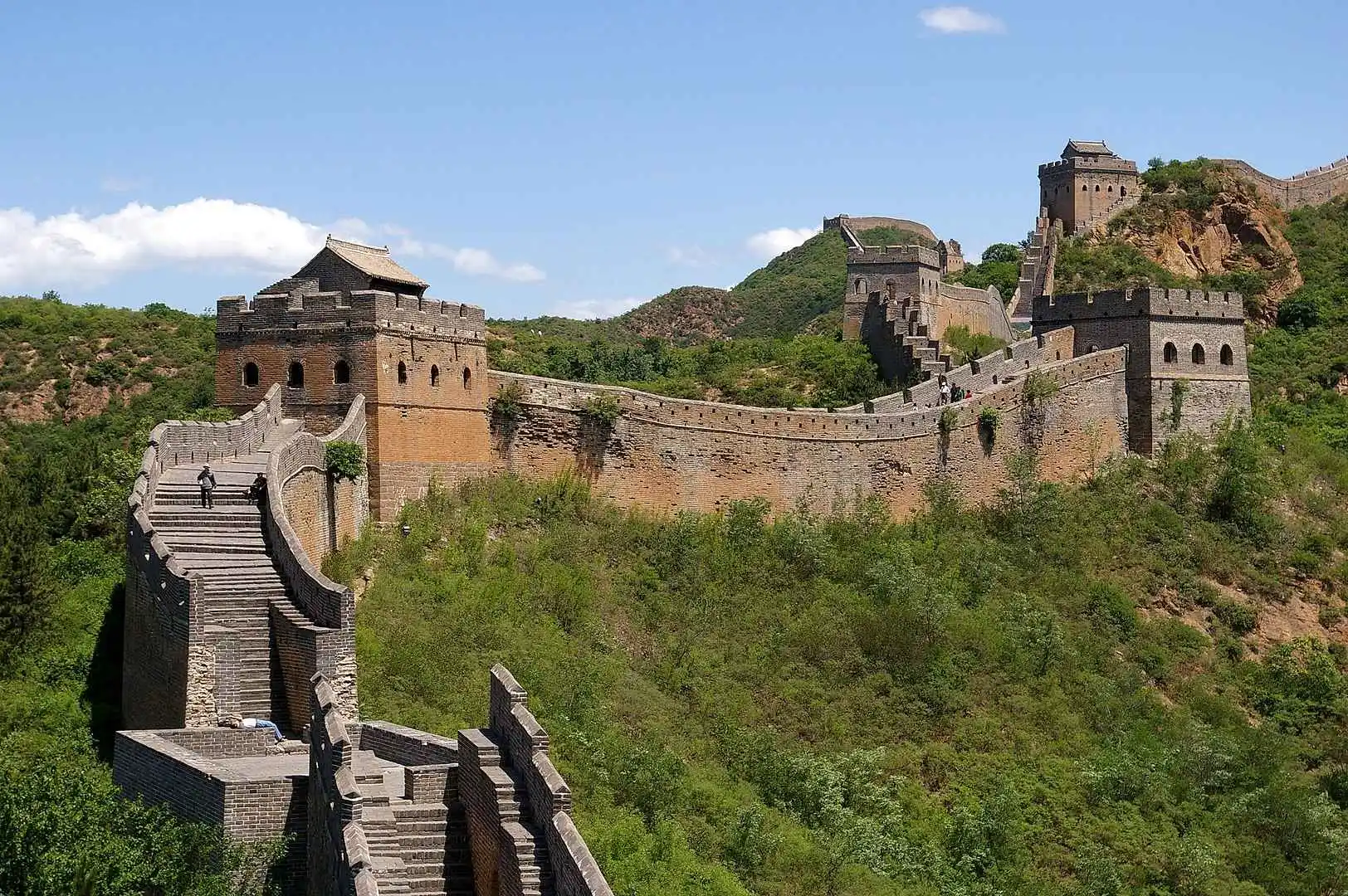The Great Wall of China
It is difficult to find a greater work of man than the Great Wall of China. Only the Egyptian pyramids stand out.
While the constructions of the Giza valley are largely concentrated in one place, the wall, like a giant dragon, stretches across deserts, fields, mountains and plateaus, spanning more than 20,000 km from east to west China. Despite its near-zero effectiveness in defending against invaders, it has come to symbolise the might of the country, acting as a barrier against the rest of the world. Today, millions of tourists flock to see this symbol every year, a significant proportion of whom are Chinese residents who believe that if you have never been to the Wall, you cannot be a true Chinese.
The history of China’s grandiose construction
The construction of the Great Wall of China began in 221 B.C. According to legends, the emperor’s army (about 300,000 people) was thrown into the building. A considerable amount of peasants have participated in this construction, as the decrease of builders had to be constantly compensated with new human resources, blessing that there were no problems in China. There are even people who believe that the Great Wall of China was built by Russians, but let’s leave it as another nice conjecture.
The main part of the wall was erected right under the Qing. The front of the work consisted of consolidating the fortifications already built into a single structure and extending the wall to the west. Most of the wall was made of smooth earthen mounds, which were later replaced by stone and brick.
The geographical position of the wall is interesting. It seems to divide China into two parts: the nomads in the north and the farmers in the south. Other research confirms this fact.
The longest fortification is also the longest cemetery. The number of builders buried here is unknown. Many of them were buried in the wall here and construction continued on their bones. Their remains have been found even today.
Over the centuries, many legends have surrounded the wall based on the great mortality. One legend has it that Emperor Qin Shi Huang was told that the construction of the wall would be completed with the death of a man named Wano or with the death of 10,000 other people. The Emperor, of course, ordered that Wano be found, killed and buried in the wall.
The wall has been rebuilt many times throughout its existence. This was done by the Han and Sui dynasties. The Great Wall of China acquired its present appearance during the Ming dynasty (1368-1644). Here the earthen mounds were replaced by bricks and some sections were rebuilt. Watchtowers were also erected here, some of which have survived to the present day. The towers were used to warn of enemy attack. The towers were used to warn of the enemy’s advance by means of a fire lit at night and smoke during the day.
The construction of the towers gained momentum during the reign of Emperor Wanli (1572-1620). Many thought that it was he, and not Qin Shi Huangdi, who erected this imposing edifice until the 20th century.
The wall proved to be a poor defensive construction. A wall is no obstacle to a great conqueror. Only people can stop the enemy, but the wall had problems with people. So, for the most part, the wall guards did not face north, but… south. They had to watch out for peasants who were tired of taxes and work and wanted to defect to the free North. In this regard, there is even a half-myth about the loopholes in the Great Wall of China pointing in the direction of China.
As China expanded northwards, the wall’s function as a border disappeared completely and began to decline. Like many other great structures of antiquity, the wall began to be dismantled for building materials. It was not until modern times (1977) that the Chinese government fined the wall for defacing it.
The Great Wall of China is now a recognised symbol of China. Many sections have been restored and are on display to tourists, and one section even runs alongside Beijing, attracting millions of Chinese culture enthusiasts.
The Great Wall of China in Facts and Figures
Where is the Great Wall of China? It is in China. The wall originates in the city of Shanhai Guan and from there stretches in winding curves through the middle of the country to the centre of China. The end of the wall is near the city of Jiayuguan. The wall is between 5 and 8 metres wide and up to 10 metres high. The 750 km stretch of the Great Wall of China was even used as an excellent road at one time. Alongside the wall are other fortifications and forts in some sections.
Measured in a straight line, the length of the Great Wall of China is 2,450 kilometres. The total length, taking into account all the meanders and branches, is estimated at 5,000 kilometres. Myths and legends have spoken of the size of this structure since ancient times; it was even said that the wall could be seen from the moon. But this myth has been freely dismantled in our age of technological progress. Although from space (from orbit) the Chinese wall can be seen, especially if it is a satellite image. By the way, a satellite map will be available below.
You may also like:
